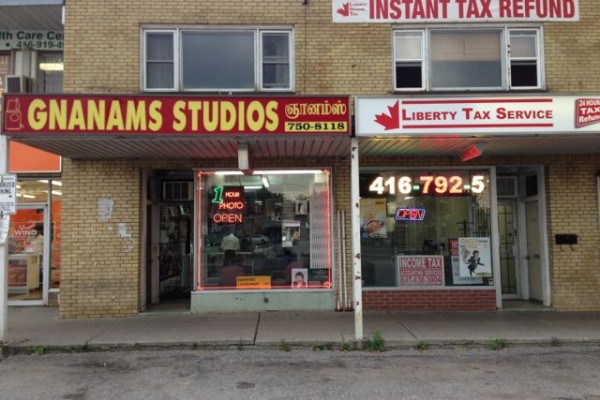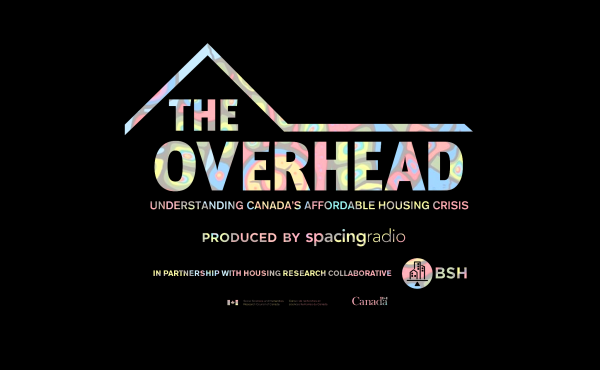A city is more than the towering skyscrapers of its business district, more than its landmarks, a city – in particular one that has attained or aspires to global city status as Toronto has, and as other Canadian cities are aspiring too – is a complex mix of people: of different ethnicities and social classes. These people do not experience the city the same way – what can be prosperity to higher income earners can be pricing out to those with lower (or even middle) incomes.
It is essential to understand all the components of a city – the different people from different backgrounds – to gain a true understanding of the social and economic dynamics and be able to craft policies accordingly.
Sudhir Venkatesh, professor of sociology at Columbia University and author of Gang Leader for a Day, provides a rich illustration of New York City’s underground economy – and its (at times overlapping) interaction with different social classes and ethnicities – in his recent book, Floating City. Overall, this book provides a thorough illustration of the social and economic dynamics in a rapidly changing – and gentrifying – global city.
The author admits that this book is not an academic work, but rather more of a memoir of his experiences researching the underground economy of drugs and prostitution as part of his sociological work with Columbia University. Nonetheless, the emphasis on story-telling provides a valuable illustration of the dynamics across different social class and racial groups and their interaction with the underground economy in New York City. This provides a human face – a texture and depth to the lives of those evading the law, including personal and social struggles – not captured in tables of statistics.
Dissemination of information – to policy-makers and the general public – should be a priority of academia and telling a good story. Providing a human face is an important component of this.
Venkatesh highlights that while some have the skill to “float” among different social-classes and ethnicities the reality for many – in particular immigrants and non-whites – is self-reinforcing cycles of deprivation. Venkatesh writes of his own conceptual struggle:
“First was a vision of global New York as an unrestricted field of opportunity where even the low income immigrant could climb the latter and experience a better life… The second was global New York as a ruthlessly hierarchical town with great social benefits for the victors and potentially devastating consequences for the losers.”
Thus, global New York was a place of opportunity but also of deep structural inequality and entrenched poverty.
The author highlights the plight of many non-European immigrants, how integration is difficult if not impossible as they are unable to “just shorten their names and lose their accents.” Many are consigned to low paying service sector jobs, such as cab driving, cleaning, and being nannies.
A further insight from Venkatesh, on the reality for many immigrants and minority groups, was that many of them “had limited relations with people outside their social class and ethnic group.” It is notable that a recent article in the American Sociological Review by Seok-Woo Kown, Colleen Helfin, and Martin Ruef cited quantitative analysis which showed that while social capital – factors such as membership in voluntary organizations, strength of local social networks, and trust – were conducive to entrepreneurship, these benefits were less available to immigrants and minority groups for whom social isolation – lack of networks outside their cultural groups – was too often a reality.
A summary and analysis of this article was provided by Richard Florida in The Atlantic Cities.
This creates the spectre – not just in New York City but in other North American cities – of the creation of a new underclass, what Venkatesh terms “the long-term disenfranchised” consisting in large part of immigrants and visible minorities.
For many, the underground or illegal economy – whether it is the drug or sex trade cited by Venkatesh, or even something milder like working for a service sector employer and being paid off-the-books to avoid work-permit issues – is the only means of survival.
To understand our cities, we need to understand the different dimensions, the experiences of different social classes and ethnic/cultural groups, and understand the causes of illegal activity rather than resorting to simplistic “tough on crime” policies that are either ineffective or worsen the problems of social marginalization and exclusion.
Canada’s largest city, Toronto, is rapidly growing and changing, it is an emerging global city. The plight of the poor, of immigrants who have found economic and social integration difficult if not impossible, and of the underground economy, are part of understanding the true dynamics of the changes Toronto is experiencing. These are factors to consider in other Canadian cities as well – such as Vancouver and Calgary for example – which are rapidly growing, absorbing significant numbers of newcomers, and where factors such as competitive labour markets, inability to get qualifications recognized, and rising housing costs can hinder social inclusion. In Winnipeg, there is a significant urban First Nations population which has experienced long term structural poverty.
Global cities such as London and New York are centres of finance and commerce, but also very unequal places, where the poor – and many in the middle-class as well – are priced out with rising property values – it was this concern that fuelled the ultimately successful mayoral campaign of Bill deBlasio in New York City.
With Toronto as an emerging global city, an important consideration is encouraging an equitable model of economic growth, where the poor and middle-class are not left behind. For cities throughout North America, it is important to consider policy making in the context of differential impacts on different sectors of society.
Venkatesh’s book – and research – are valuable in gaining this holistic understanding of cities, including the dynamics in rapidly changing global cities such as New York. It could also provide a basis for an inquiry on emerging global cities such as Toronto, and cities experiencing significant growth and change such as Vancouver and Calgary.
Hassan Arif (@hassannb) is a PhD candidate in Sociology at the University of New Brunswick in Fredericton where he is specializing in urban sociology and local government. He is also a columnist, having published for the Telegraph Journal in Saint John, the Daily Gleaner in Fredericton, as well as the Huffington Post, and Sustainable Cities Collective. He has also contributed to Insight articles for the University of Toronto’s Martin Prosperity Institute and has published a paper on economic development in smaller jurisdictions for the Canadian-American Center at the University of Maine.
Photo by Shawn Micallef


